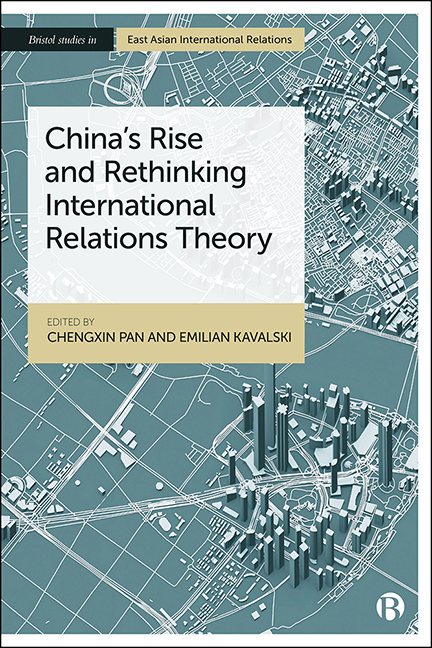Book contents
- Frontmatter
- Contents
- List of Abbreviations
- Notes on Contributors
- Acknowledgements
- Introduction: The Rise of China and Its Challenges to International Relations Theory
- PART I Theorizing China’s Rise: Beyond Eurocentric Knowledge Production
- PART II Theorizing China’s Rise: Critical Reflection on Mainstream Frameworks
- Epilogue: Towards International Relations beyond Binaries
- Index
1 - Putting China in the World: From Universal Theory to Contextual Theorizing
Published online by Cambridge University Press: 15 September 2022
- Frontmatter
- Contents
- List of Abbreviations
- Notes on Contributors
- Acknowledgements
- Introduction: The Rise of China and Its Challenges to International Relations Theory
- PART I Theorizing China’s Rise: Beyond Eurocentric Knowledge Production
- PART II Theorizing China’s Rise: Critical Reflection on Mainstream Frameworks
- Epilogue: Towards International Relations beyond Binaries
- Index
Summary
Introduction
In much of what goes for international relations (IR) theory, the reemergence of China as a major power is interpreted largely in terms of familiar categories – from containment and hegemonic succession on the ‘realist’ side to norm acceptance and integration on the ‘liberal’ side (for example Pan, 2012). The particular attributes of Chinese modernity and their contradictions spark little or no interest. We are seemingly trapped between the universals of theory, on the one hand, and the particulars of China, on the other. Never the twain shall meet. Yet, an argument can be made that the Chinese ‘case’ raises important questions about the universality of international relations theory as presently understood (Agnew, 2017). As the Introduction makes clear, and the chapters in this book provide all sorts of evidence, perhaps the ‘rise’ of China with the attendant difficulties of bringing it ‘to theory’ offers an opportunity both to question the very universality claimed by current theory and to reformulate theorizing in light of the Chinese experience.
Today, China occupies a central place in what can be called ‘a prophetic culture’ – the focus of the field of IR theory on predicting future events rather than explaining current practice (Woodside, 1998: 13). This requires applying a universal calculus to cases such as China in which empirical anomalies are viewed as minor particularities. In this vision, China is rising as either or both a miracle and a threat. As William Callahan (2010: 11) says: ‘China's experience lends itself to hyperbole – both positive and negative. The People's Republic of China has the world's largest population, largest portfolio of foreign exchange reserves, largest army, largest middle class, and the largest diaspora.’ The list of ‘largests’ goes on. Much of this is usually put down to the recent success of the implementation of the East Asian developmental state model as adapted and expanded from the practices of other states in the immediate region. Of course, it is based at least in part on export-oriented manufacturing and integration into the global financial system. So, any Chinese foreign policy decisions must be placed in this context.
- Type
- Chapter
- Information
- Publisher: Bristol University PressPrint publication year: 2022



